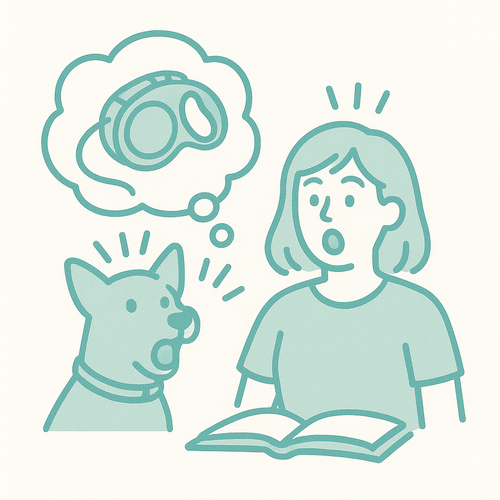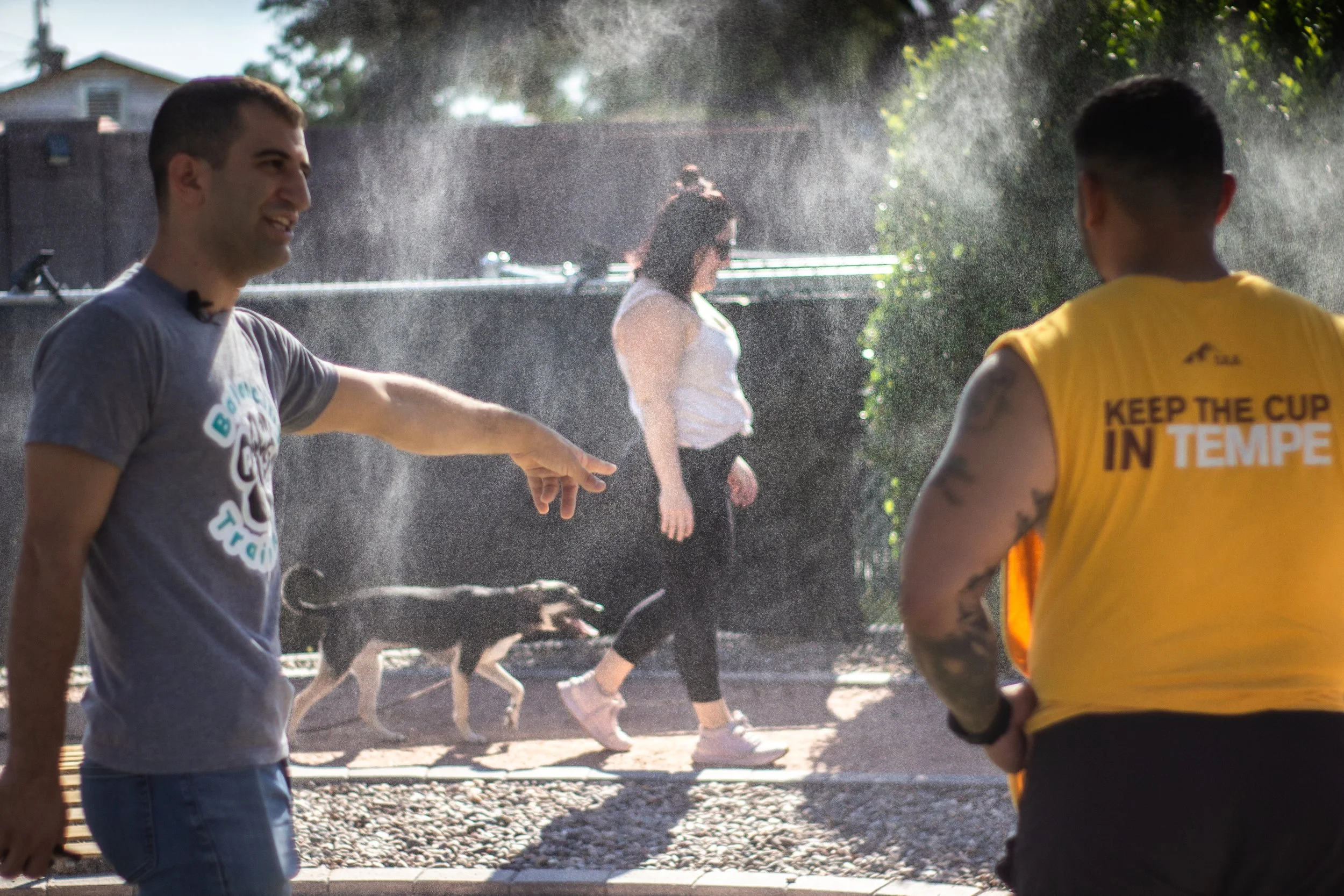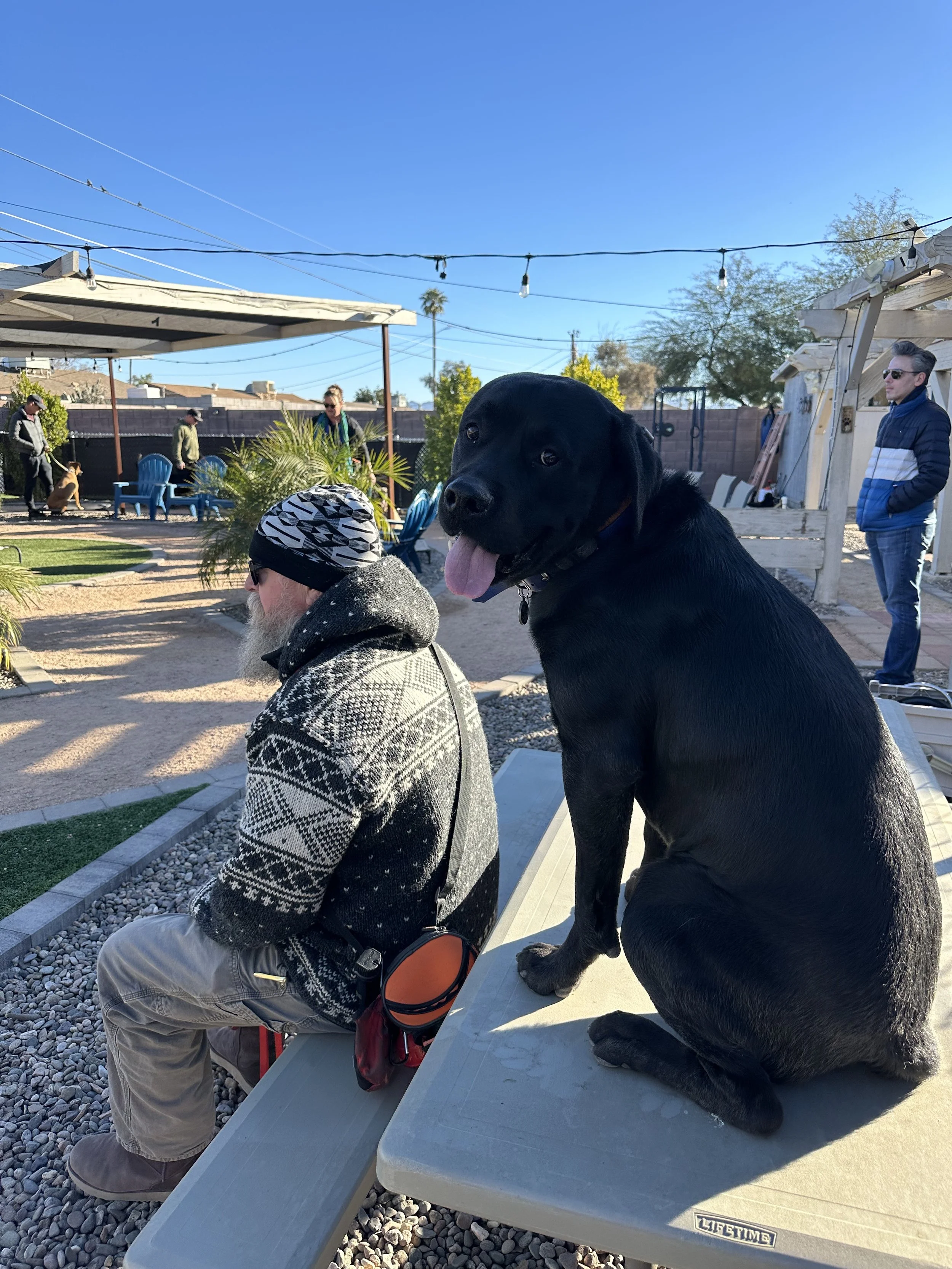Leash Training Isn’t Just About the Walk — It’s About the Relationship
When I talk to new clients, most of them think leash training is simply about teaching a dog not to pull.
But the truth is, it’s so much more than that.
To me, leash training is about building a shared language — one where every step, every pause, and every turn communicates trust, respect, and understanding between you and your dog.
At Balancing Paws, I don’t see leash training as a single skill we “check off.” I see it as a progressive journey for both ends of the leash. It starts simple, builds in layers, and leaves plenty of space for you and your dog to practice, make mistakes, and grow together.
Stage One: The Exploration Walk
I start almost every dog with a retractable leash — but only in controlled environments.
That means open spaces with minimal distractions where I can manage what’s going on around us. A retractable leash in a busy street or high-traffic area is asking for trouble — but in a safe, open area, it’s an incredible tool for teaching freedom with boundaries.
The Exploration Walk is about letting your dog be a dog. They can sniff, explore, and take in the world, but with gentle limits in place.
In this stage, I’m looking for two main things:
The dog turns with you without “hitting the end” of the retractable leash.
The dog stops with you and stays within petting range when you pause.
It’s not about perfection — it’s about starting the walk as a shared activity instead of a tug-of-war.
Stage Two: Turn, Bump, and Stop
Once a dog is paying more attention to where their handler is, we switch to a shorter leash and I introduce Turn, Bump, and Stop.
Turn tells the dog to follow your lead smoothly.
Bump is a spatial awareness exercise — a gentle cue to help your dog be more aware of where you’re going so no one is stepping on anyone’s toes.
Stop is about stillness — being able to pause together without pulling or pacing.
This is often the stage where owners start to feel that magical “we’re moving as one” connection. And I always remind them — mistakes are okay here. Every little misstep is a chance to learn.
Stage Three: The Farmer’s Market Walk
Once the basics are in place, I like to test them in what I call the Farmer’s Market Walk.
Picture weaving through a busy market — people, kids, strollers, other dogs, food smells, loud noises. It’s the perfect test of focus and trust in a real-world environment.
We don’t start here — but when we get here, it’s a huge milestone. If your dog can stay with you in a setting like this, you know your communication is solid.
Stage Four: Setting the Pace
This is my favorite part.
When you and your dog reach the point where you can set the pace and they match you naturally — not rushing ahead, not lagging behind — the walk feels effortless.
It’s no longer about “training.” It’s about moving together in sync because you trust each other.
Progress on Both Ends of the Leash
This approach isn’t just about teaching the dog. It’s about teaching you, too!
You learn timing, body language, and calm communication. Your dog learns to read you, stay engaged, and respond without constant reminders. And because there’s room for trial and error, you both get to grow without the pressure of “getting it perfect” right away.
Ginger’s Story
One of my recent clients, Ginger, is the perfect example of why I love this method.
When I first met Ginger, she was sweet — but only to her owners. With everyone else, she was guarded. She’d growl, keep her distance, and make it clear she wasn’t interested in new friends.
We started with controlled-environment Exploration Walks, moved into Turn, Bump, and Stop, practiced Farmer’s Market-style drills, and eventually worked on Setting the Pace.
After just four lessons, Ginger transformed.
She became even sweeter with her owners — more snuggly and affectionate.
Her growls of uncertainty turned into little grumbles of joy.
And the best part? She started showing me that same affection and trust — and I’d only met her four times.
That’s the power of progressive leash training. It’s not just about walking skills — it’s about building trust so deep that it changes how your dog interacts with the world.
The Walk Is Just the Beginning
Leash training, when done this way, is more than a skill. It’s a relationship in motion. Every walk is a chance to communicate, learn from each other, and strengthen a bond that goes far beyond the leash.
If you’re ready to experience this transformation with your dog, I’d love to help you get started.
Book your consultation here.




